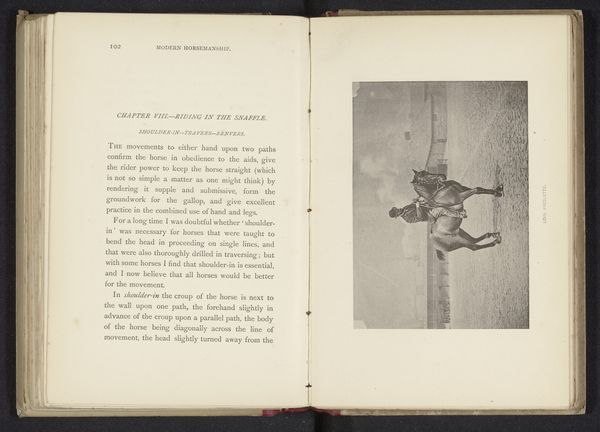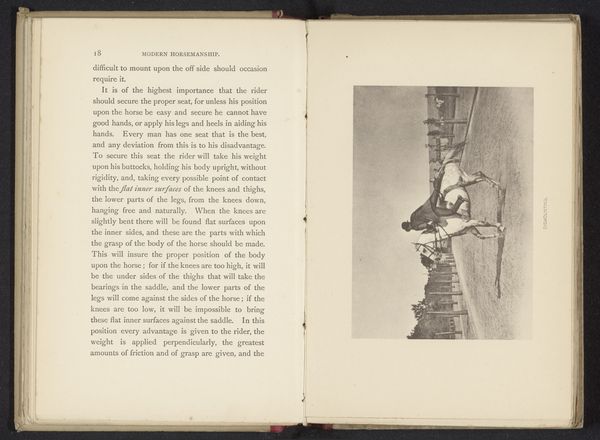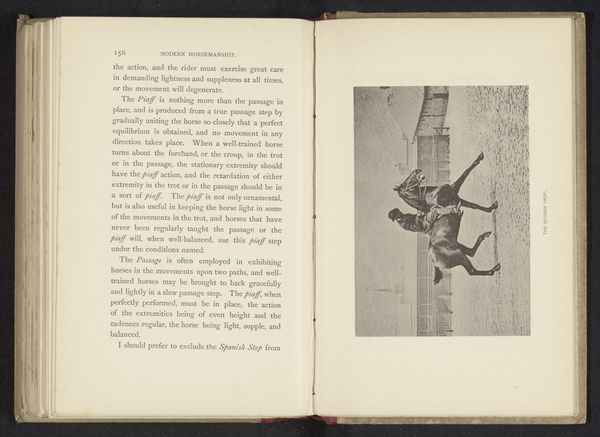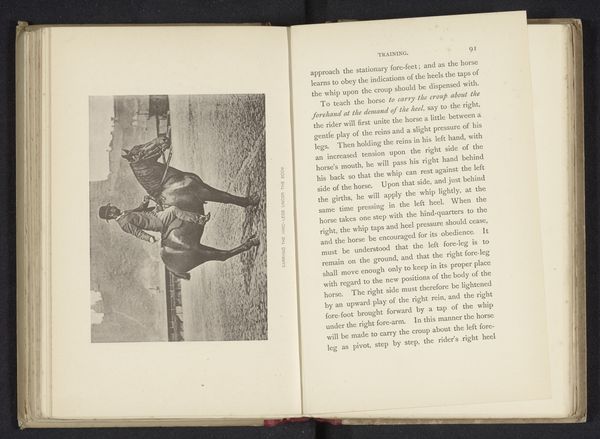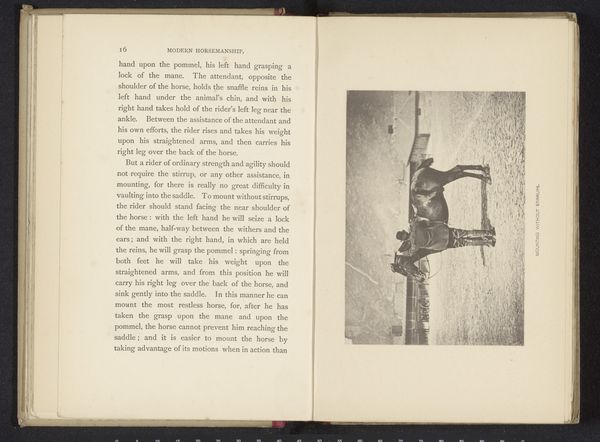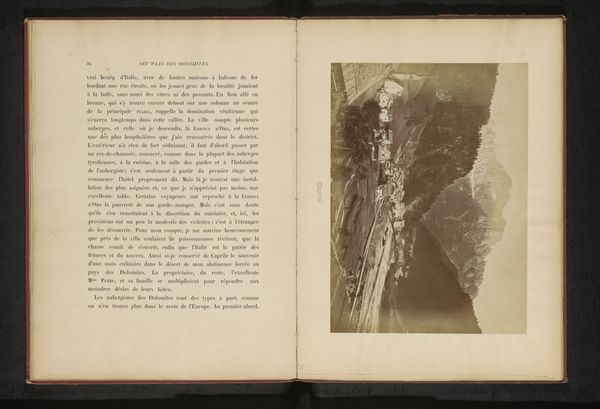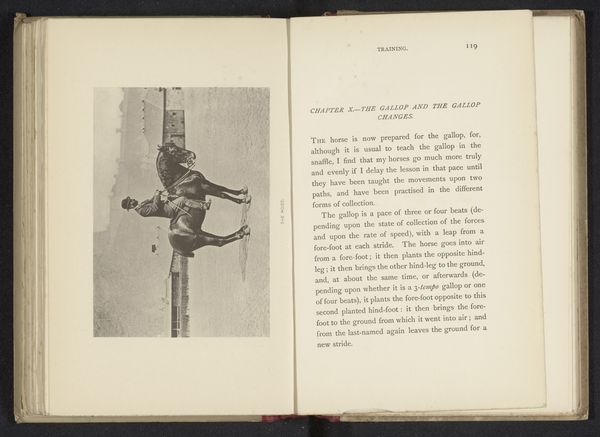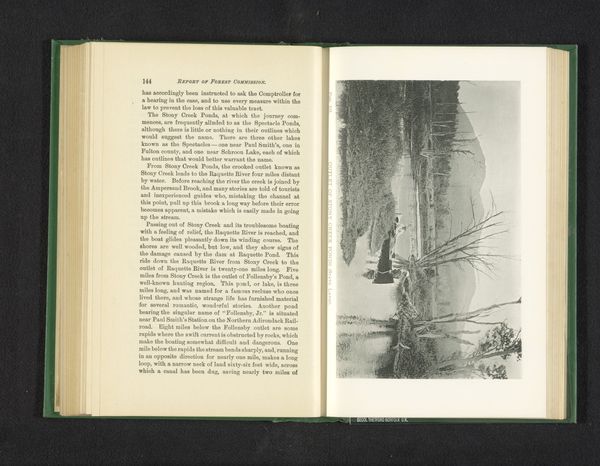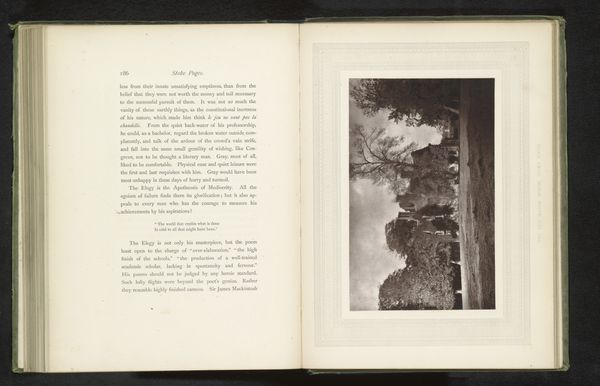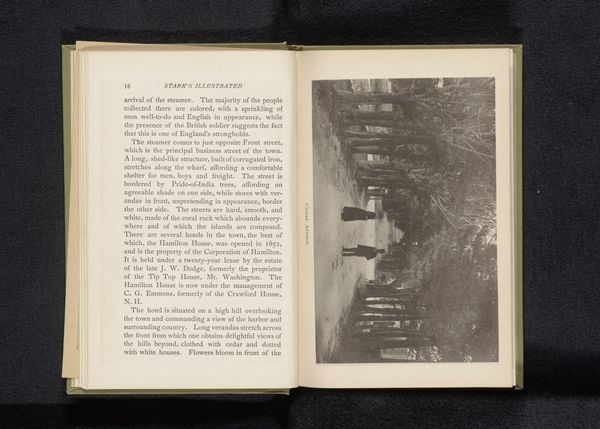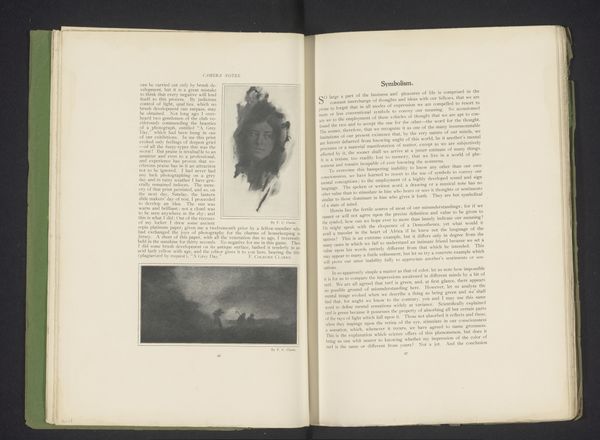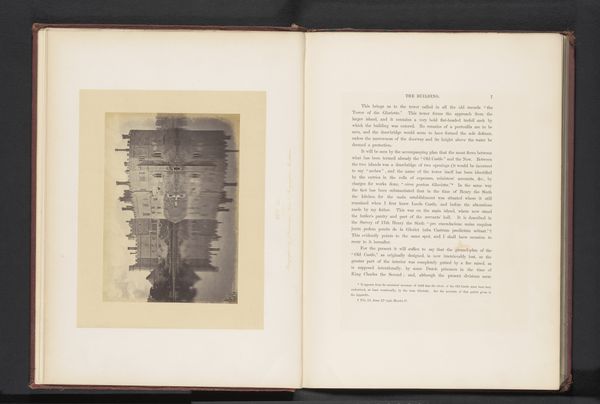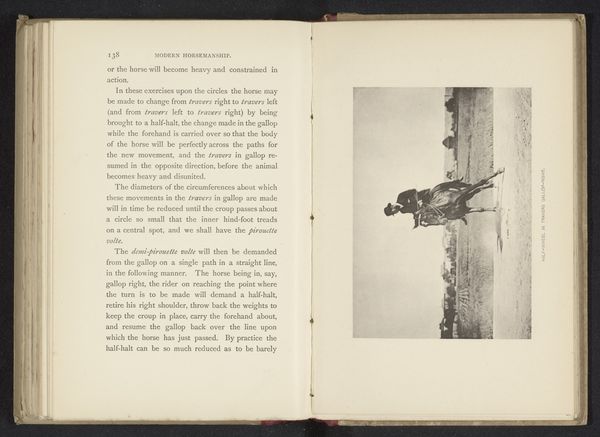
Man die een paard bestijgt zonder de stijgbeugels te gebruiken before 1889
0:00
0:00
anonymous
Rijksmuseum
print, photography
#
portrait
#
still-life-photography
# print
#
photography
#
horse
#
genre-painting
#
realism
Dimensions: height 97 mm, width 137 mm
Copyright: Rijks Museum: Open Domain
Curator: This photogravure, "Man die een paard bestijgt zonder de stijgbeugels te gebruiken," before 1889, which translates to "Man riding a horse without using stirrups" resides in the Rijksmuseum. What strikes you when you first see this image? Editor: The tonal range gives a muted quality, lending an atmosphere of quiet determination. A figure is frozen mid-action atop the horse. The framing is quite curious, as well. It evokes a feeling of restrained power. Curator: Indeed. The scene's captured at a distance; the focus seems directed to how social standing dictated conduct. Equine sports in those days spoke volumes about class and decorum. Editor: This piece reminds me of other visual narratives that focus on man-animal relationships and the power dynamics ingrained in these. Who has the control, and what social assumptions are in play? In terms of gender too, there is no woman in the image. Were women allowed to ride horses without stirrups at this time? Curator: The choice to show a 'mastering' feat, mounting without aids, suggests themes of dominion and skill. Horses often carried deeper symbolic importance beyond simple transportation— they spoke to war and status. Consider equestrian portraiture across centuries. Editor: Precisely. This print encapsulates how skill was, and sometimes still is, a form of performative masculinity. Was this image designed to propagate the ideology that man is above other species? I find that aspect ethically complex. Curator: The artist presents a straightforward portrayal of an event and an adherence to standards. Though implicit biases always seep through. What you're pointing out is precisely what demands more profound evaluation and discussion in our day. Editor: Analyzing such an early photograph— contextualizing not only its creation but also its reception—opens doors to examining what our past biases can teach. It really shows that there is more here than meets the eye. Curator: Indeed. Considering photography's role early in democratizing image making offers valuable perspectives for understanding realism. Editor: I'm left pondering about how it sits amongst broader discussions on ability, elitism, and even exploitation, considering the historic use of horses and animals.
Comments
No comments
Be the first to comment and join the conversation on the ultimate creative platform.
